Clay Across Cultures: Mesoamerica
This exhibit spans from ancient Mexico to the Peruvian Amazon and highlights the diverse ceramic traditions of Indigenous cultures across Mesoamerica. These vessels range from human effigies to intricately patterned Amazonian forms and reflect a deep connection between art, ritual, and everyday life.
Often used in funerary settings, offerings, or spiritual ceremonies, these works were not simply utilitarian, they were made to communicate with ancestors, honor deities, and carry symbolic meaning. Each piece reveals the ways in which clay was shaped to hold not just food or water, but stories, beliefs, and identities passed down through generations.

Jar
Casas Grandes, Mexico
Earthenware
Ca. 1250-1450 CE
This vessel is a typical example of Ramos Polychrome pottery that was made in Casas Grande (Paquime) in Chihuahua Mexico from. It is characterized by thin red and black line designs.
Jackman Collection
1991.03.094 Lowell D. Holmes Museum of Anthropology

Jar
Chihuahua, Mexico
Earthenware
Ca. 1250-1450 CE.
This vessel is decorated with stylized birds, likely a quail and a macaw, blending functional design with artistic detail. In Mesoamerican cultures, birds often held spiritual significance, symbolizing messengers or guides between worlds. Its rounded body, everted rim, and suspension holes suggest it was intended for both use and display, possibly within a ritual context.
Jackman Collection
1991.03.106 Lowell D. Holmes Museum of Anthropology

Urn
Mesoamerica
Earthenware
This seated figure likely held spiritual significance, serving a ceremonial or funerary purpose. Its detailed headdress and chest may represent a deity, reflecting its placement in tombs as a guardian or companion. The posture, facial expression, and carved symbols embody the belief in clay as a sacred vessel for both the body and spirit in Mesoamerican cultures.
E1968.02.017 Lowell D. Holmes Museum of Anthropology
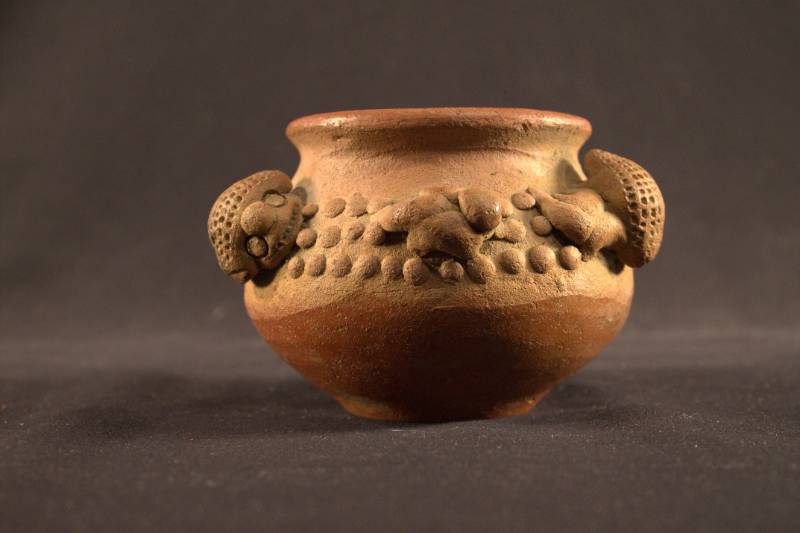
Jar
Costa Rica
Earthenware
This small round jar is adorned with snails around the rim. Snails are often seen as spiritual messengers, symbolizing patience, perseverance and protection.
Jackman Collection
1991.03.137 Lowell D. Holmes Museum of Anthropology

Jar
Shipibo Indian, Peru
Clay, Pigment
This jar is decorated with fine red and brown linework on a cream base. The Shipibo are known for patterns that reflect spiritual visions, with designs representing energy flows, healing, and harmony in the natural world.
Donated by Roy Parker
2005.01.025 Lowell D. Holmes Museum of Anthropology

Effigy Vessel
Colima, Mexico
Earthenware
Ca. 100 BCE- 300 CE
With raised arms and a protruding face, this vessel resembles a human figure integrated into a functional pot. Common in West Mexican tombs, such effigy vessels often served ceremonial roles in funerals or offerings.
Jackman Collection
1991.03.069 Lowell D. Holmes Museum of Anthropology
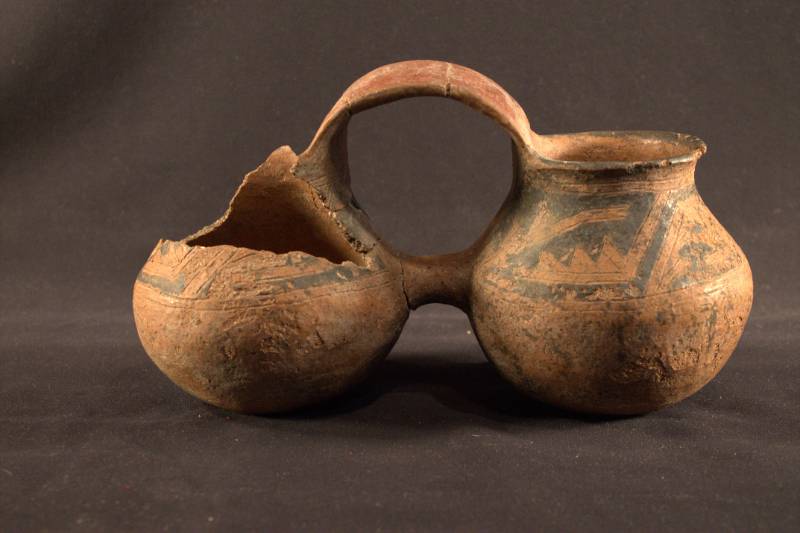
Double-Jar Vessel
Casas Grandes, Mexico
Earthenware
Ca. 1250-1450 CE
This double jar vessel is joined by a handle connected to the two jars at the rim. Double-jar vessels were commonly used in rituals and could also be used to store food and drink.
Jackman Collection
1991.03.214 Lowell D. Holmes Museum of Anthropology

Jar
Mata Ortiz, Mexico
Artist: Paty Quezada
Fired Clay
Ca. 1970-1980
This contemporary jar was made by Paty Quezada, a prominent artist from Mata Ortiz, a town known for reviving the ancient ceramic styles of Paquimé. Its black-on-black surface was achieved through burnishing and careful firing, while small punctures form a dotted geometric pattern. The sharply squared rim adds a modern flair to a traditional shape. Mata Ortiz pottery blends innovation with heritage, showing how artists continue to shape and share their cultural legacy.
Donated by Dr. Arthur Rohn
2001.08.002 Lowell D. Holmes Museum of Anthropology
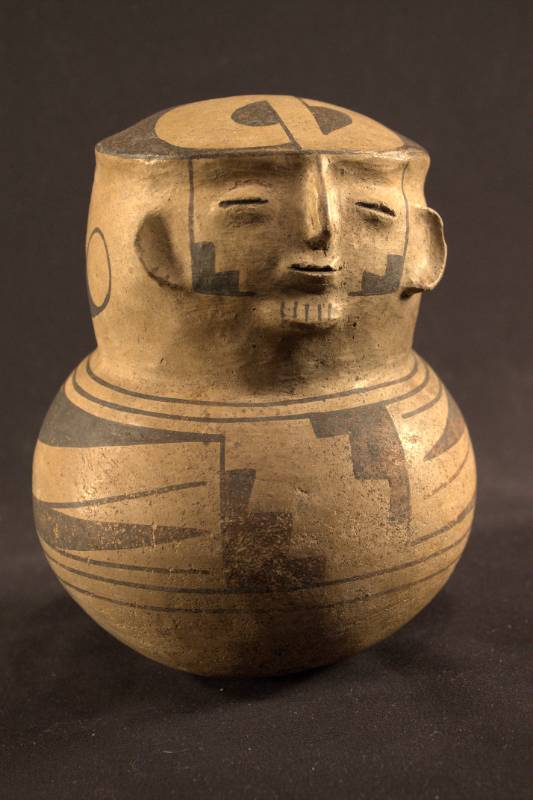
Effigy Vessel
Casas Grandes, Mexico
Earthenware
Ca. 1250-1450 CE
This effigy jar depicts a human head rising from a round-bodied vessel. The carved beard, slit eyes, and stepped design along the back suggest ritual importance. Such jars may have served as burial offerings or symbolic ancestors.
Jackman Collection
1991.03.165 Lowell D. Holmes Museum of Anthropology
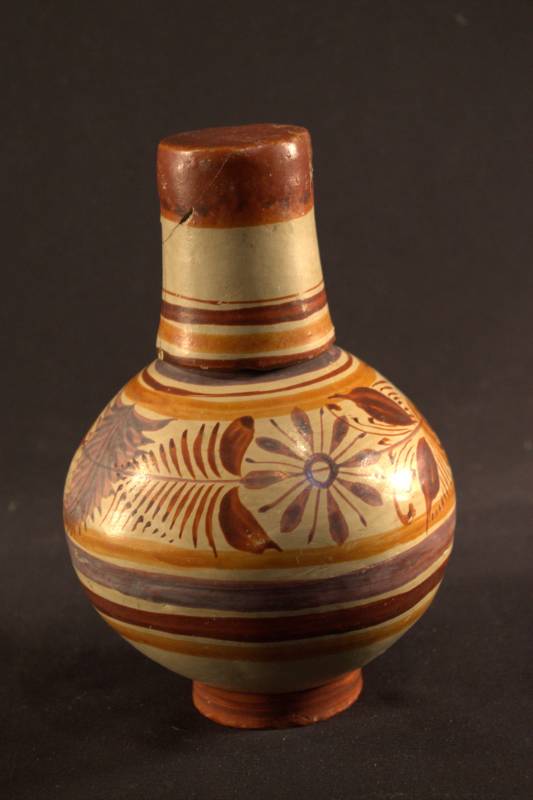
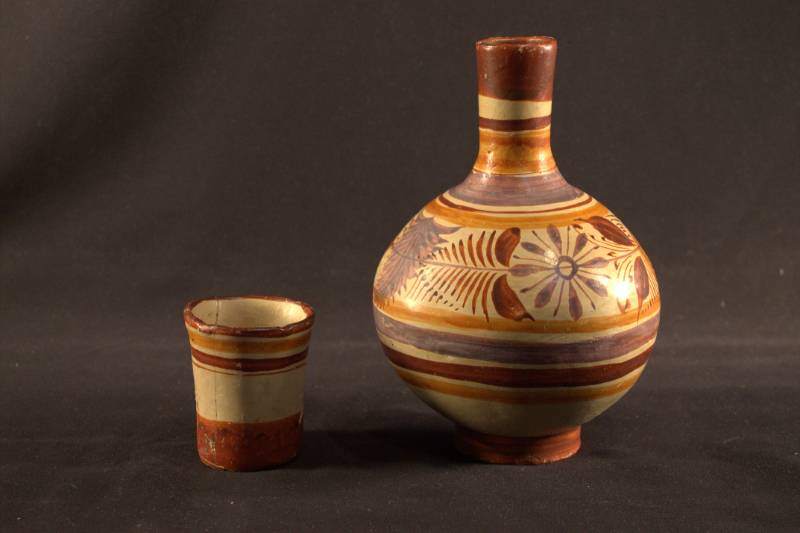
Water Jar/Cup
Mexico
Earthenware
Water jars with cups were first made in Mexico in the 16th century. Floral designs are a very common motif on this type of vessel.
Transferred from the Fellow-Reeves Museum
1995.02.046a,b Lowell D. Holmes Museum of Anthropology


